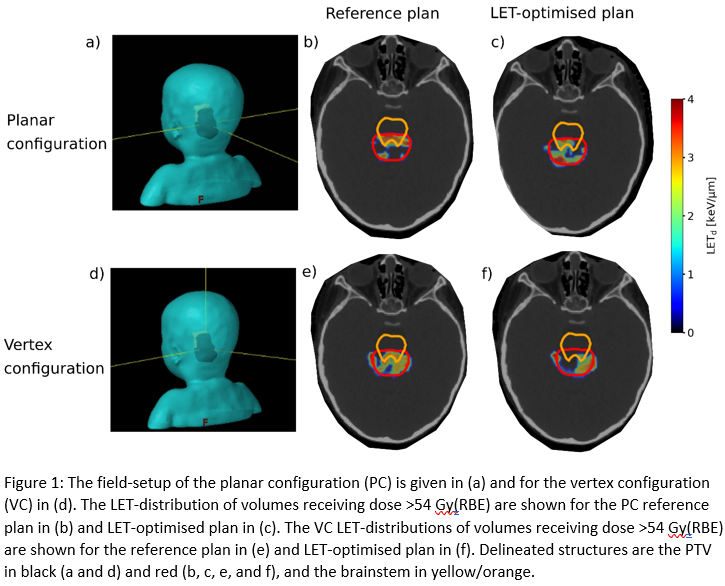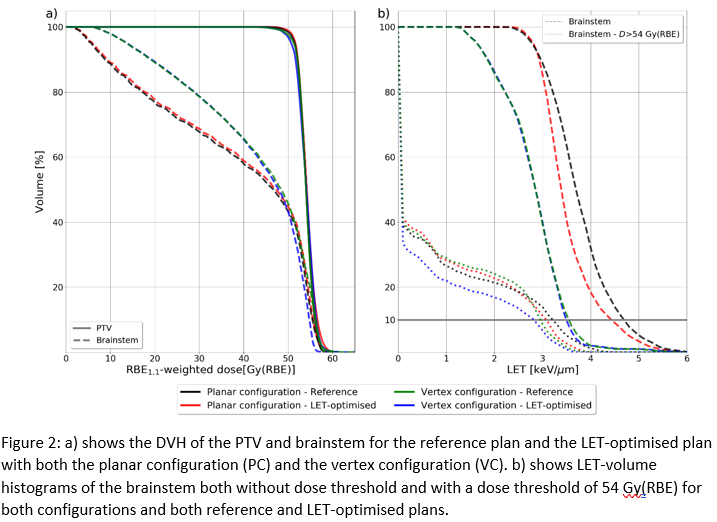LET-based optimisation to minimise normal tissue complication probability in paediatric ependymomas
Andreas Havsgård Handeland,
Norway
PO-1947
Abstract
LET-based optimisation to minimise normal tissue complication probability in paediatric ependymomas
Authors: Andreas Havsgård Handeland1,2, Daniel J. Indelicato3, Helge Henjum2, Kristian S. Ytre-Hauge2, Lars Fredrik Fjæra4, Helge Egil S. Pettersen1, Johannes Tjelta1,2, Erlend Lyngholm2, Ludvig P. Muren5,6, Yasmin Lassen-Ramshad5, Camilla H. Stokkevåg1,2
1Haukeland University Hospital, Department of Oncology and Medical Physics, Bergen, Norway; 2University of Bergen, Department of Physics and Technology, Bergen, Norway; 3University of Florida, Department of Radiation Oncology, Jacksonville, USA; 4Oslo University Hospital, Department of Medical Physics, Oslo, Norway; 5Danish Centre for Particle Therapy, Aarhus University Hospital, Aarhus, Denmark; 6Department of Clinical Medicine, Aarhus University, Aarhus, Denmark
Show Affiliations
Hide Affiliations
Purpose or Objective
Proton therapy is the preferred radiation modality for many paediatric brain tumours, potentially sparing organs at risk (OARs) such as the brainstem. However, the relative biological effectiveness (RBE) of proton therapy, clinically set to 1.1 compared to photons, varies along the beam depending on the linear energy transfer (LET), (α/β)x-ratio of the tissue and dose fractionation. Increased LET in the distal fall-off of the beam may be of particular concern for critical OARs close to the target volume and LET-optimisation may therefore reduce normal tissue complication probability (NTCP). In this study we explored an LET-optimisation strategy, and if risk attributed to the potential association between brainstem necrosis and LET-hotspots could be lowered based on a dedicated LET-inclusive NTCP model.
Material and Methods
Treatment plans were generated based on anonymised CT data of a paediatric patient with an ependymoma tumour invading the brainstem. A 3-field pencil beam scanning (PBS) plan with one lateral, posterior and vertex field (vertex configuration (VC) – similar to the delivered double scattering plan) and a new PBS plan with co-planar beams and a posterior field (planar configuration (PC)) were optimised (RBE=1.1) in the Eclipse treatment planning system (Figure 1a and 1d). 54 Gy(RBE) was prescribed to the planning target volume (PTV), and brainstem dose was constrained at D50% ≤ 52.4 Gy(RBE) and D10% ≤ 55.4 Gy(RBE). The same field set-ups were then optimised in our in-house Monte Carlo based dose and LET optimisation software. By using the initially obtained spot distribution as a reference, LET above 2.35 keV/µm in the brainstem was constrained while LET was maximised in the PTV. The LET threshold was set from a logistic regression model fit to a case-control cohort of ependymoma patients, with the model including the L10% (LET to 10% volume) to the brainstem volume with dose >54 Gy(RBE), where L10% = 2.35 keV/µm gave a 5% risk. Dose, LET and associated risk were then assessed for all plans.
Results
The method showed the potential in reducing LET in both the full and high dose brainstem volume. LET-hotspots in volumes receiving dose >54 Gy(RBE) were shifted away from the brainstem (Figure 1). PTV coverage and similar brainstem dose was maintained in all plans (Figure 2a). The VC had lower LET compared to the PC, and the LET-optimised VC reduced LET in the high dose volume (Figure 2b). For the PC, the LET to the whole brainstem was slightly reduced (Figure 2b). For the VC and PC, the L10% (D >54 Gy(RBE)) was reduced from 3.0 to 2.8 keV/µm and 3.2 to 3.1 keV/µm which lead to the LET-associated brainstem necrosis risk decreasing from 22% to 16% and 35% to 28%, respectively.
Conclusion
The LET-optimisation strategy reduced LET hotspots in the brainstem and LET-associated NTCP. The redistribution of LET could be done without altering the beam configuration. However, the LET depended on beam set-up, and additional proton fields could potentially further minimise LET hotspots.

